Please share with your friends!
Incorporating hands-on activities with Montessori 3-part cards
If you step into a Montessori three-to-six classroom, you’re bound to find Montessori 3-part cards on the shelves. You could find Montessori 3-part cards in different curriculum areas of the room; Language, Science, Culture, Peace, Sensorial, and Math. Montessori 3-part cards are also a wonderful activity to include in your homeschool and you can incorporate real hands-on activities to go with the cards.
I’m working on a gardening theme with my daughter (at two years and nine months old) and we’ve been exploring all kinds of gardening activities, getting our hands dirty! For example, we planted an herb garden, transferring herb seedlings into bigger flower pots, and also planted seeds. We really got our hands into the dirt! We’ve also been watering the herbs and flowers in our garden each day. We sometimes pick the herbs for cooking.
-

shoveling soil into the flower pot
-

Planting Cat grass seeds (for our two kitty cats) -
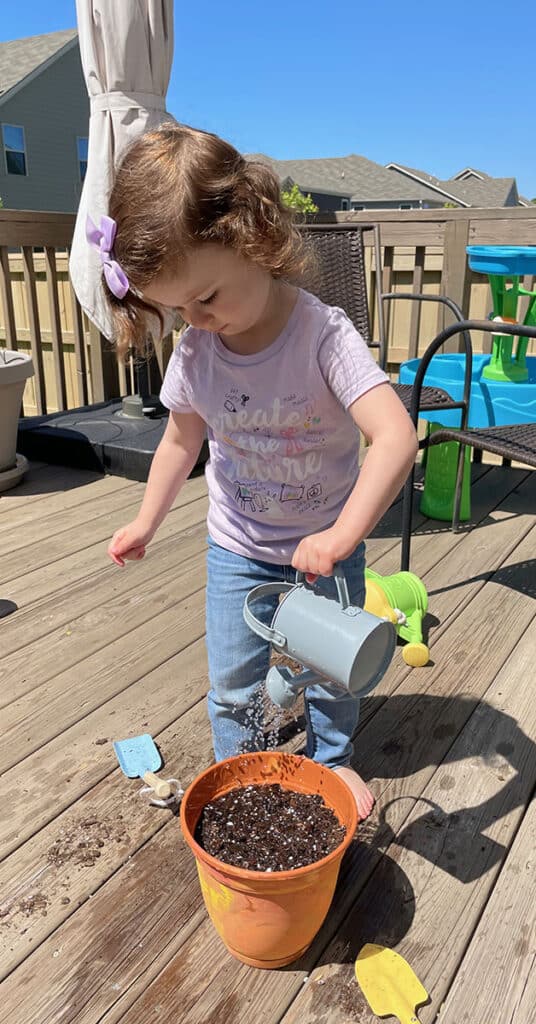
watering the seeds
-
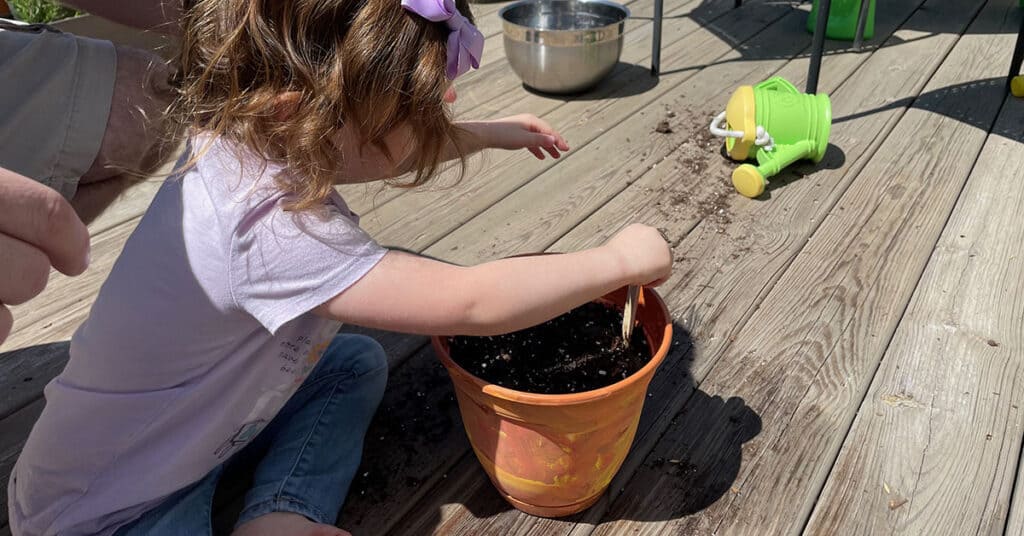
Putting in a label, “cat grass”
I thought it would be a great opportunity to incorporate hands-on gardening with learning the names of herbs with 3-part cards. I took pictures of the eight herbs in our garden and made 3-part cards with them. You can download the herb 3-part cards I made, below!

Note: to download the herb 3-part cards, sign up for the resources library at the bottom of this page!
Montessori 3-Part cards are a matching Language activity. One set of 3-part cards usually has 8-10 pictures (3 matching cards for each picture). Matching the three parts for each picture helps the children to learn about the names of things. They also help with classifying things and for vocabulary enrichment. You can make the cards (or buy them) for any theme or topic, which is why they are used in different curriculum areas.
The cards can be for the youngest three-year-olds with basic topics such as farm animals or types of fruit. They can also be made with more advanced science topics, for example, types of amphibians or parts of a frog. The ideas and themes are endless! You can make 3-part cards for whatever theme you’re working on with your child.
What are the 3 parts of the 3-Part Cards?
- Control card: This is the largest card that has the picture and the label or the name of what is in the picture, underneath the picture.
- Picture-only card: This is the card that has only the picture. You match this picture card to the control card.
- Label-only card: This is the smallest card that has only the words on it. It is the label or the name of what’s in the picture. You match this label to the control card.
-

Control card, picture-only card, label-only card
How do you use Montessori 3-part cards?
- Place the Control Cards in a vertical column (or in 2 columns on the left). Name the pictures to your child as you place each one.
- Place each matching picture-only card to the right of the control card. Name the picture again, as you place each one.
- Place each matching label-only card underneath the picture-only card, to the right of the control card. Name each picture again.
-
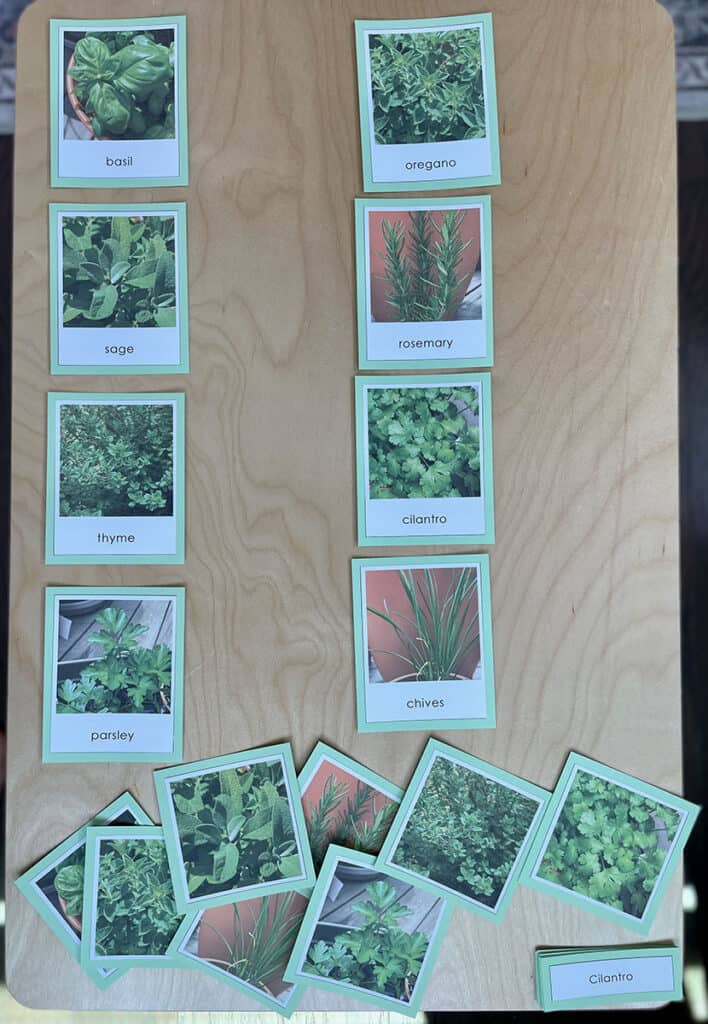
Lay-out control cards -
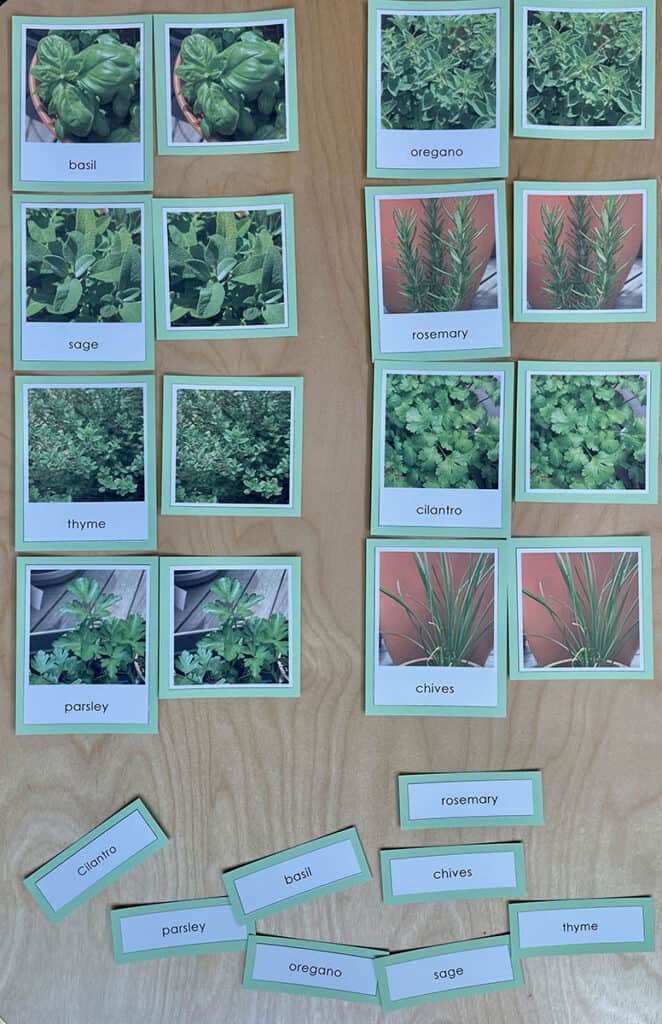
Match picture-only cards -

Match label-only cards
But doesn’t my child need to be reading to do 3-Part Cards?
No, your child doesn’t need to be reading yet in order to do 3-part cards. Yes, there is a label with words on it, but the youngest children are using their visual discrimination skills to match the letters they see on the labels.
In the Montessori Language Curriculum for 2.5 to six-year-olds, Part 1: Oral Language is for the youngest children who are not reading yet. In Part 1, there is a lesson called Vocabulary Enrichment which is a lesson using basic 3-part cards. Your child does not need to be reading to do the lesson.
For the youngest children and older toddlers, you could match real objects together first, and then match to the pictures only (no labels or control cards). Additionally, you could start with only 4-6 pictures (instead of 8-10).
Montessori 3-part cards for children who are a little older
For children who are emerging readers or readers (pre-K and kindergarten age), you can use the 3-part cards as a reading and/or writing activity. You could use 3-part cards with the moveable alphabet or have your child create little booklets that go with the three-part cards.
At this level, you can do more advanced topics, like parts of a whole. For example, parts of a bird or parts of a flower. Montessori 3-part cards at this level are often called classification cards or nomenclature cards.
Fun idea for the older children:
If you download the herb 3-part cards on this page, you’ll also get a blank template (PDF and Word Doc). You can print these out and cut them, and your child can draw the herbs or glue herbs from your garden on the cards, and write their own labels with a pencil. They can make their own little herb garden booklet!
Concrete to abstract
Before introducing your child to 3-part cards, the first step is seeing the real thing. For example, instead of starting with 3 part cards or even little pretend figurines of vegetables and fruit, use real vegetables and fruit. Go into your kitchen and see what you have. Or go on a field trip with your child to the grocery store, farmer’s market, farm, or berry patch.

This starts the Montessori journey of the concrete to the abstract. Themes are introduced with real “concrete” hands-on things. Then, slowly you can transition to exploring with little figurines (3-dimensional) if you have them. Then you transition to the “abstract” or pictures (2-dimensional).
The second step is seeing a 3-dimensional object/figurine (pretend) of the real thing. You can purchase a collection of figurines that are classified into one topic. Safari Ltd. sells “Toobs” containing little figurines of all different topics. Your child can match the little figurines to the picture cards.
The third step is using pictures as a matching activity, or the 2-dimensional 3-part cards. To extend this further, the children who are a little bit older can make little booklets of their own handmade 3-part cards!
There is a misconception about Montessori 3 part cards
Yes, the cards help the children to learn language; the names of things, classifying things within a topic, and vocabulary enrichment. But 3-part cards really cement language learning; it’s the last step.
I’m not saying completely forget 3-part cards unless your child had the opportunity to see every object in real life first. There are many topics that are nearly impossible to see in person first. For example:
- landmarks and famous buildings in other countries
- famous paintings and artists
- historical people
- animals, insects, or flowers that live in different parts of the world
So it can be very interesting for our children to explore 3-part cards for these topics, to get a peek at unique things. You could also go on a field trip with your child to the zoo, museum, aquarium, or Botanical garden.
Make sure the Montessori 3-part cards are meaningful
I’ve heard from other Montessori teachers, children, and parents that sometimes Montessori 3-part cards are boring. In my experience as a classroom teacher, by trial and error and observing in the classroom, I found that some 3-part cards go untouched on the shelves, collecting dust. The children are not interested in them.
But I don’t feel that the cards are boring. They can be exciting and a lot of fun. You, the adult can help to make them fun!
The most important thing to remember is that the 3-part cards you choose and work with are meaningful to your child. To help you figure out great 3-part card themes that are meaningful for your child, ask yourself these questions:
- Does your child have the opportunity to explore this theme hands-on or can you go on a field trip to see the real thing first?
- Do you have books on this topic at home and does your child express interest in it?
- Does your child talk about this theme or topic a lot?
- What are your local landmarks, animals, flowers, and attractions?
- Have you tried using real objects or figurines first?
- Can you come up with a fun game to do with the cards, like Memory?
Concluding Thoughts
You can’t go wrong with how you use Montessori 3-part cards. There are endless ideas and topics and they can be open-ended. The most important thing is that your child gets the chance to explore with the real thing before getting into the cards, if possible. Also it’s important that the theme or topic is meaningful to your child.
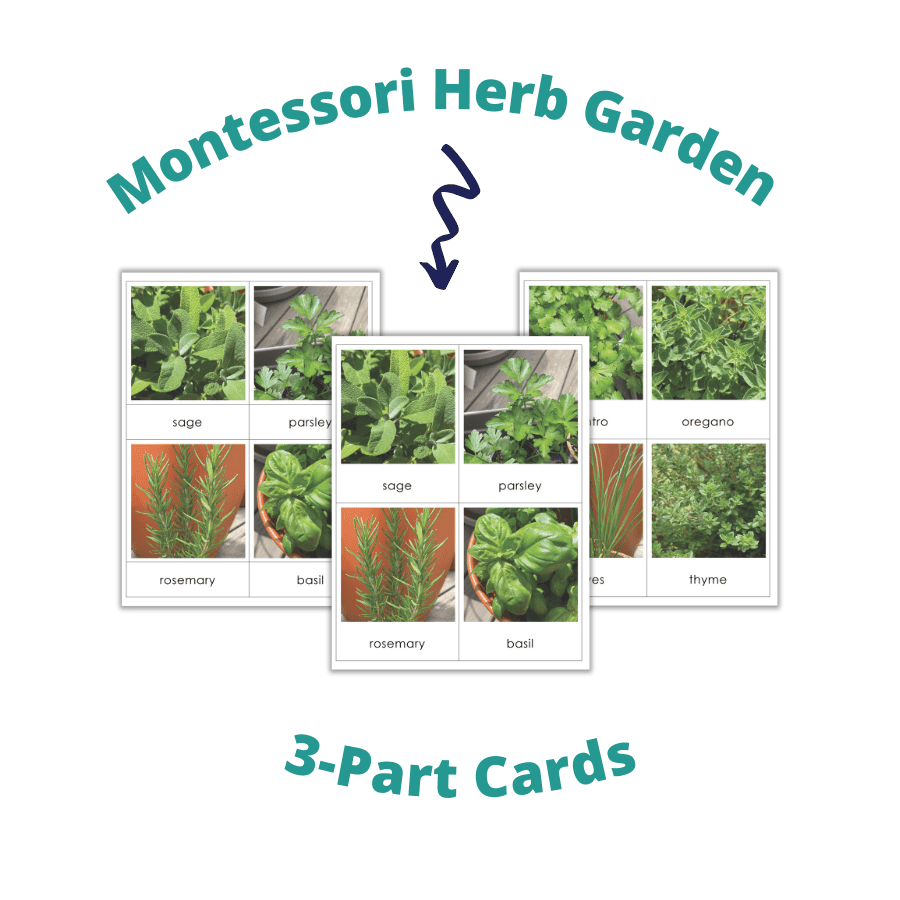
Note: to download the herb 3-part cards, sign up for the resources library, below!
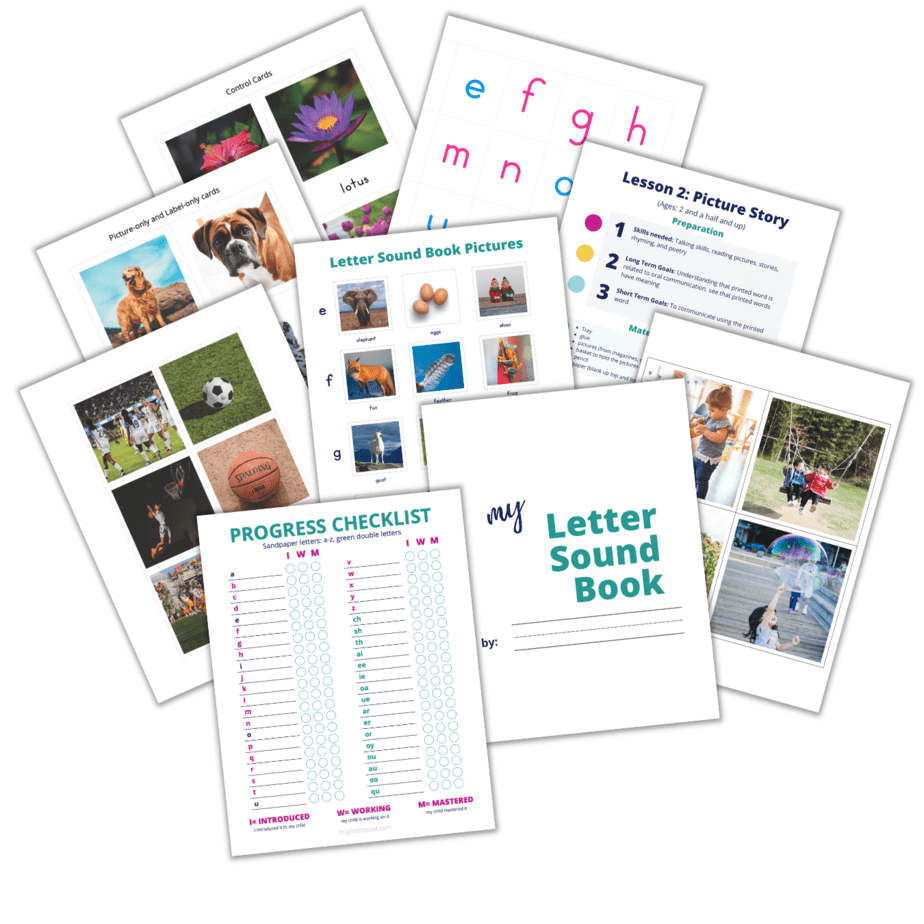

Pingback: A Really Cool Apple Stamping Gift
Pingback: Hands-on and Fun Montessori Geography: Start With Essential Land, Air, and Water Activities
Pingback: 5 Easy and Fun Sea Turtle Activities: Include Science and Sensorial In Your Ocean Theme
Pingback: Create a Fun Ocean Theme for Preschoolers: An In-Depth Guide With Ideas and Planning
Pingback: Vocabulary Words for Preschoolers: Using Mind Mapping to Brainstorm New Themes
I love the way you incorporate learning and gardening. We love getting our hands dirty and feeling the earth.
Yay garden theme thats so fun to learn plant stuff!
What a great strategy. It is nice to see kids learning this way and having a lot of hands-on type projects.
love how you combine learning about both gardening and reading together here!!! visual learning and learning by doing is so very critical and useful and effective as well
What a great way to incorporate learning with gardening
This is a well constructed reading. All I know were flash cards until I read about 3-part cards. A new approach to learning and teaching my kids.
Wow! I can see so much fun and learn happening here. What a great way to support learning through play?!